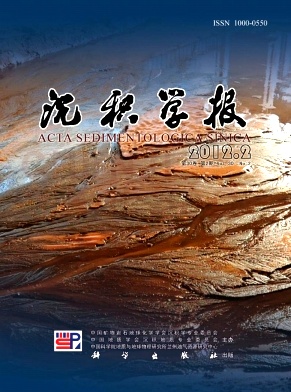OSL Dating of the Palaeoflood Events in the Middle Reaches of the Weihe River
- Publish Date: 2012-04-10
-
Key words:
- palaeoflood slackwater
Abstract: Through deeply field survey,a Holocene loesssoil profile with interbedded flood slackwater deposits (SWD) was found in Xianyang of the middle reaches of the Weihe River,which recorded the information of palaeoflood events. In order to achieve OSL ages,9 luminescence samples were collected and postIR OSL measurements were used with singlealiquot regenerativedose (SAR) protocol. Grainsize distribution and magnetic susceptibility were also analysed so as to research the occurrence and cause of palaeoflood.The result shows that the fast component is dominant in OSL signals of quartz grains(40~63 μm),which is suitale for postIR OSL measurements. For all dating measurements, preheat temperature of each natural or regenerated dose of young samples and older samples were 260℃ and 240℃,respectively;and the cutheat was set to 220℃. OSL ages increases with depth and conform to layer where were collected except individual ages underestimated.At the NSC site, the layer of flood slackwater deposits (SWD) with horizontal bedding、silty claylike and sallow colour, was in the depth of 95~110 cm,which has typical characteristic of SWD. This flood deposit involve 3 flood depositional layers, indicate of at least 3 palaeoflood evevts occured. The average of lowfrequency magnetic susceptibility of paleosoil was 133.62 108 m3.kg1,was the highest in this profile,while the value of SWD layer was 113.68 108m3.kg1 which was much higher than Malan loess,but lower in paleosoil layer. Grainsize distribution of SWD layer was dominated by silt, the content of silt was 59.43% and clay was 38.107%,the content of sand (>0.05 mm)was the least that was 3.32%. The curve of sand (>0.05 mm) in the SWD layer present a small peak. The dating results show that the extreme palaeofloods occurred 3.0~3.2 ka. According to the analysis of all the result, extraordinary floods occurred 3 200~3 000 a B. P. in the Weihe river ,the period of flood occurred frequently. Three flood depositional layers indicates that each of the slackwater deposit beds has recorded one individual flood event. So the Weihe river chronological framework of palaeoflood were established. This study shows that the Weihe river in transform period from rainy to dry; the highly variable, unstable and catastrophic climate was the cause of extreme palaeofloods occurrence.
| Citation: | OSL Dating of the Palaeoflood Events in the Middle Reaches of the Weihe River[J]. Acta Sedimentologica Sinica, 2012, 30(2): 346-355. |






 DownLoad:
DownLoad: